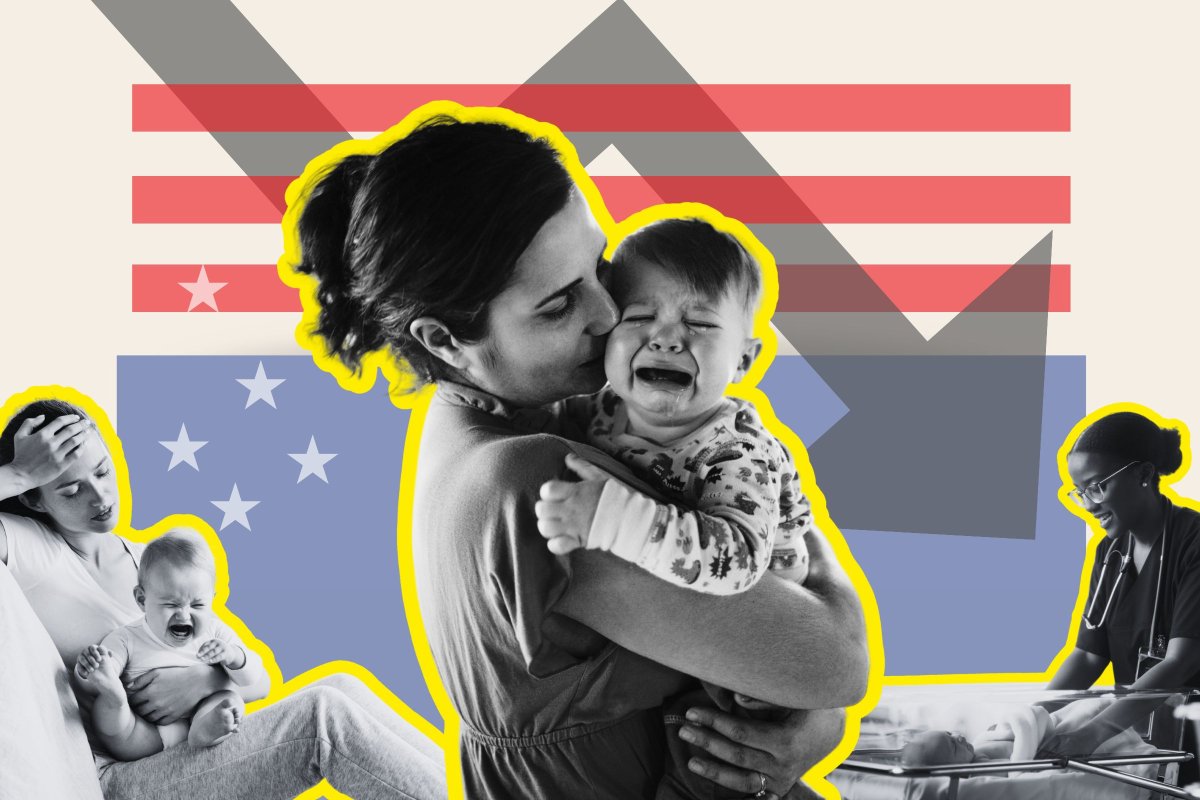The U.S. birth rate has dropped to an all-time low.
Recent insights from the National Center for Health Statistics at the Centers for Disease Control and Prevention (CDC) reveal there were only 54.5 births for every 1,000 females aged 15 to 44 in 2023, the lowest figure on record and 3 percent down from the 2022 birth rate.
Since the most recent birth rate high in 2007, the number of births per year has steadily declined. The supposed COVID-19 “baby bump” raised theories that the birth rate would increase but this has been disproved by the latest data.
In fact, since 2007 the birth rate has dwindled by 17 percent with fertility rates also falling by 21 percent.

Data from the CDC reveals there were only 54.5 births for every 1,000 females aged 15 to 44 in the U.S. in 2023, the lowest figure on record.
Photo-Illustration by Newsweek/Getty
Newsweek has contacted the CDC for comment.
The CDC data also reveals that the birth rate for teenagers aged between 15 and 19 declined by 4 percent between 2022 and 2023. Since 2007, the teenage birth rate has fallen by two-thirds.
The results also showed some worrying trends in prenatal care. The number of women who had prenatal care in their first trimester was down 3 percent from the previous year and the percentage of women who had no prenatal care at all was up 5 percent in 2023.
A recent Newsweek map showed that the birth rate in all 50 states last year was down. The greatest number of births occurred in the most populous states of California (399,368) and Texas (387,636) while Vermont recorded the lowest number of births for 2023, with only 5,068 babies being born.
However, Americans seem unfazed by the falling birth rate. An exclusive opinion poll by Newsweek showed that 42 percent of Americans were “not at all concerned” by the low birth rate. Only 16 percent said they were “very concerned” by it.
Generally, men were more troubled by low birth rates than women. Compared with 10 percent of women, 22 percent of men said they were “very concerned.”
The poll was undertaken by Redfield and Wilton Strategies and polled 1,500 eligible voters on May 1, 2024.
The low birth rate has become an election debate topic with both the Harris and Trump campaigns looking at updating the child tax credit (CTC) rate to encourage more people to have children.
Currently the maximum CTC is $2,000.
Republican vice president nominee JD Vance has been particularly vocal about wanting to increase the birth rate and has laid out a proposal that families would get a tax credit of $5,000 per child should the Republicans take the White House.
Under the current rules, only couples who make less than $400,000 a year jointly, or $200,000 a year for individuals can qualify for the full CTC amount.
Under Vance’s proposal, there would no longer be income restrictions on the CTC meaning all American families would be able to apply.
Harris has proposed a $6,000 CTC per child for the first year and $3,600 for every year thereafter. Unlike Vance, Harris has not proposed changing the income rules for the CTC.
Republicans have said Harris’ plans would be too expensive.
Neither Harris or Vance has specified whether their versions of the CTC would be refundable—this is important to low income families who don’t pay enough in taxes to benefit from CTC.





